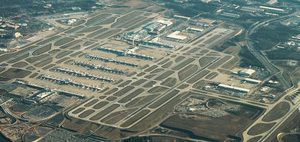By Karien Volker, Deputy Manager of Circular Economy at Fundación Chile
The image of tons of garbage obstructing the passage of the Mapocho River is one of those that remained in the retina after the frontal system last June. In the midst of rubble, branches and all kinds of garbage, there were remains of household appliances and other electrical devices. A “postcard” that we hope we do not forget and that mobilizes us to take action regarding the serious crisis represented by the growing volume of waste from electrical and electronic equipment (WEEE) that we are generating as a society.
The problem is certainly global. It is the waste that grows the most on the planet and —for this reason— developed countries have among their environmental priorities the recovery and recycling of these devices, reaching rates of 70% in the case of Switzerland —leader in the matter— and 50% in France. A job that continues at full speed, as we were able to verify on a recent tour to the Old Continent.
Chile, despite being an OECD country, looks at this reality from afar, with recovery rates that barely exceed 3%, although it has the third highest per capita consumption in Latin America in terms of electrical and electronic equipment (the so-called AEE), with 9.6 kilos of scrap per inhabitant per year.
If they are not recovered and proper disposal of this waste is not ensured, where do they go? And the answer is that they are generally found in illegal dumps, abandoned in vacant lots, in the backyard of some houses, or, as seen, in riverbeds, with the risk involved in having this type of artifact thrown away, as if it were common garbage. They are not, and in that you have to be blunt: they can contain up to 69 elements of the periodic table; some components are valuable metals, but there are also potentially polluting ones, which represent a risk to health and the environment.
At Fundación Chile, together with the Ministry of the Environment (MMA) and with the support of Onudi (United Nations Organization for Industrial Development), we are working to change the destination of WEEE and strongly increase recovery and recycling rates, ensuring the proper disposal of those elements that cannot be reconverted.
Through the Residuos-E project and the Renchúfate collection campaigns, we seek to support the MMA from a technical point of view with studies for the preparation of regulations and waste management systems that will have to be established for the implementation of the REP Law (Extended Producer Responsibility), while creating awareness among consumers regarding the importance of modifying the linear pattern of buying, using and throwing away.
Currently, the collection and recovery schemes are B2B, with few options for consumers seeking to recycle these devices, who generally must pay for a collection service. As of the implementation of the REP Law for this category of products, manufacturers and importers will be responsible for ensuring the proper management of this waste.
It also seeks to expand the options for reparation, which in certain countries of the European Union —which is where we are looking as an example to follow— are already established as a “right to reparation”, with specialized centers, which also have a social objective as sources of employment for vulnerable people.
If the river sounds, and also gets stuck, it is a sign that it brings something more than stones, and a call to action so that the image we saw in the Mapocho is not repeated anywhere in Chile.















